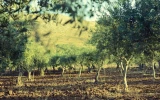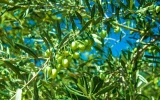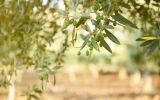When Do Olive Trees Fruit? (Season Chart)
Olive trees typically bear fruit once a year, with the fruiting season varying depending on the climate and region. These trees can take between 3 and 5 years to start producing fruit after planting, and a mature olive tree can produce between 15 and 20 kilograms of olives annually. In this article, we will focus on the specific timing of the olive tree fruiting season and explore its fruiting patterns.
Olive trees typically bear fruit in the late summer to early fall, around six to eight months after flowering. In the Mediterranean, where the majority of olive trees are grown, the fruiting season occurs from late summer through fall, around September to November.
The timeline of fruit production shifts intriguingly as olive trees adapt to local climates. To truly grasp the extent of this adaptation, let's refer to the season chart of fruiting olive trees.
Summary
- Olive trees fruit once a year, following a cycle that starts with bud formation in early spring, flowering in spring, fruit set from late spring to early summer, and maturation by late summer, leading to harvest in the fall.
- Olive trees in the Mediterranean typically bear fruit from late summer to early fall, while those in California, USA, usually fruit in the fall due to similar climate conditions.
- Climate zones play a crucial role in determining the fruiting season, with Mediterranean climates seeing fruit from June to November, subtropical climates from May to September, and temperate climates from October to December.
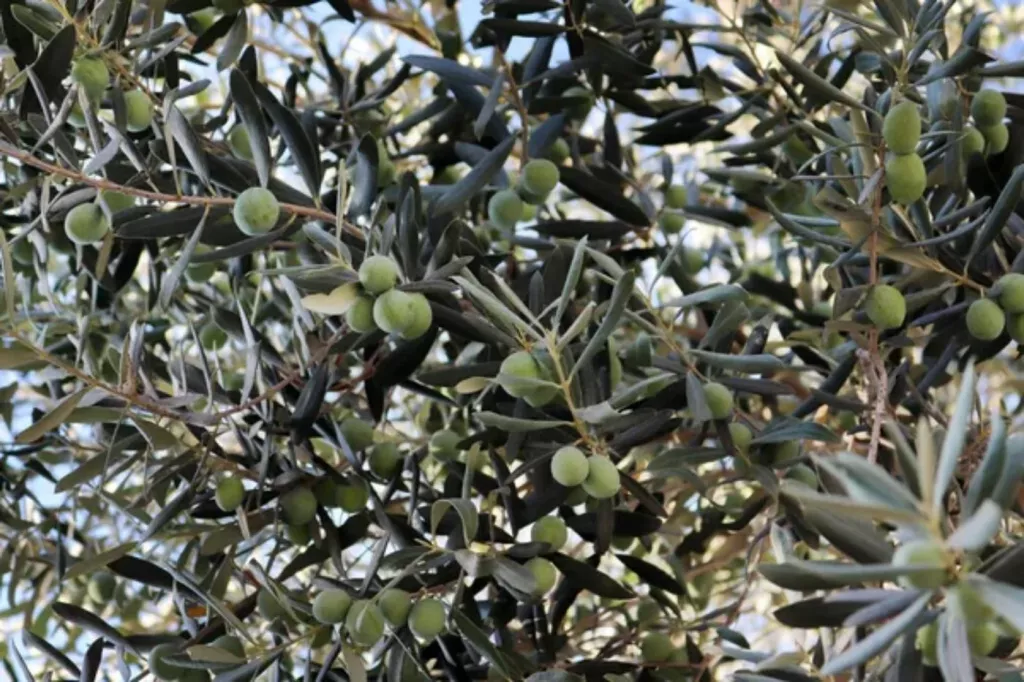
On this page:
What Time of Year Do Olive Trees Bear Fruit?
Olive trees fruit in a cycle that is dependent on the climate and care they receive. Typically, you can expect olive trees to set fruit after their flowering period, which usually happens in late spring. The fruit then develops over the summer months.
Your olive tree will show small, cream-colored flowers before the olives appear. If pollination is successful, these flowers will gradually develop into olives.
The time it takes from flowering to fruiting can vary depending on the variety of the olive tree and environmental factors.
The olives will reach maturity and be ready for harvesting in the fall, generally from September to November. This period may shift slightly based on your geographical location and the weather conditions experienced throughout the year.
| Olive Tree Variety | Fruiting Season |
|---|---|
| Picual | Late autumn to winter |
| Arbequina | Early to mid-autumn |
| Koroneiki | Late autumn |
| Manzanilla | Early autumn to early winter |
| Frantoio | Mid-autumn to early winter |
| Leccino | Early to mid-autumn |
| Hojiblanca | Mid to late autumn |
| Picholine | Late autumn to early winter |
Fruit Set and Development of Olives
The fruit set of an olive tree is a critical phase where your tree begins to develop olives from pollinated flowers.
| Phase | Time of Year |
|---|---|
| Formation of buds | Early Spring |
| Flowering period | Spring |
| Fertilization and fruit set | Late Spring to Early Summer |
| Maturation and quality development | Late Summer |
-
Early spring (Formation of buds): The olive tree begins its reproductive cycle with the formation of buds as the initial step in early spring.
-
Spring (Flowering period): These buds blossom into flowers during the spring, marking the tree's transition from bud formation to the flowering phase.
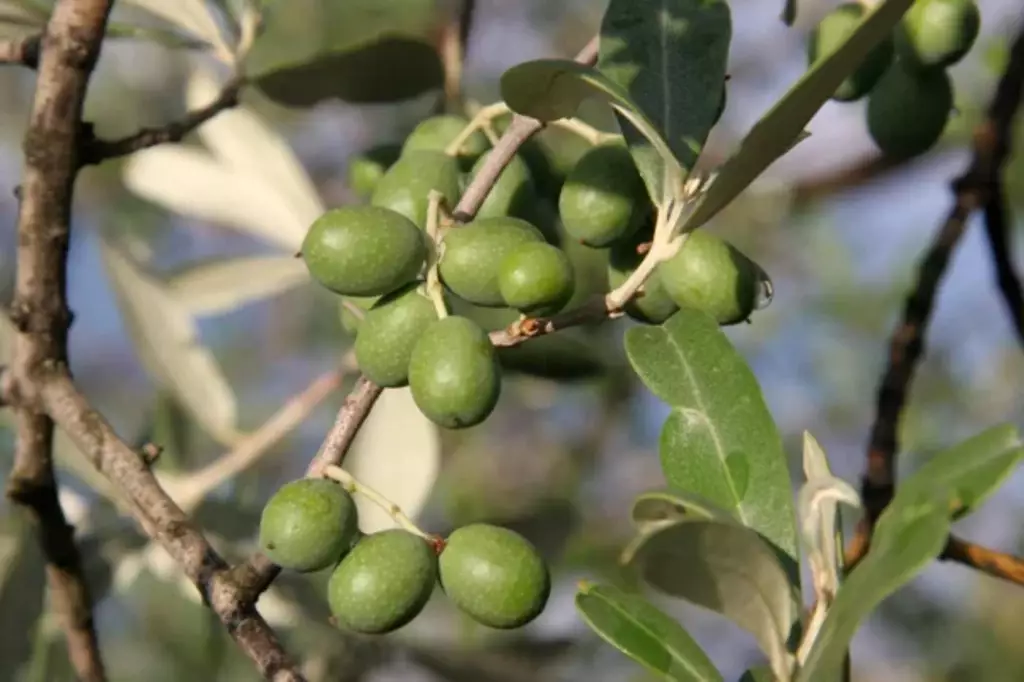
-
Late spring to early summer (Fertilization and beginning of fruit set): Once fertilized, typically from late spring to early summer, the flowers commence the fruiting process, transitioning from blossoms to the initial stage of olive formation.
-
Late summer (Maturation and quality development): By late summer, the olives increase in size and reach full maturity, accumulating nutrients and fat that influence their taste and quality.
What Month Do Olive Trees Bear Fruit?
| Month | Expected Fruiting Status |
|---|---|
| January | None |
| February | None |
| March | None |
| April | None |
| May | Start of fruit development |
| June | Ongoing development |
| July | Ongoing development |
| August | Ongoing development |
| September | Mature fruits |
| October | Mature fruits |
| November | Mature fruits |
| December | End of season |
The fruiting cycle of olive trees is an annual process that spans several months, reflecting the growth and maturation of olives. This cycle begins in May, when the first signs of fruit development appear.
During the late spring and throughout the summer months—May through August—olive fruits undergo a period of ongoing development. This is a crucial time for the growth of the olives, as they gradually increase in size and begin to accumulate the oils that olives are renowned for.
As autumn approaches, starting in September and continuing through November, the fruits reach maturity. These months are significant for olive cultivation, as the mature olives are harvested.
The timing of the harvest can vary slightly depending on the specific variety of olive trees, the local climate, and the desired ripeness of the fruit for either table olives or olive oil production.
Generally, olives picked earlier in the season produce oil with a more robust flavor, while those harvested later yield a milder taste.
By December, the olive fruiting season concludes, marking the end of the annual cycle. This period may see the last of the olives being harvested, especially in regions where the climate allows the fruits to remain on the tree longer.
After December, the trees enter a non-fruiting phase, where they rest and prepare for the next cycle of growth and fruit development in the spring.
How Often Do Olive Trees Fruit?
Olive trees typically produce fruit once a year. The fruiting cycle involves flowering in the spring, followed by the olives maturing and ripening usually in late summer to fall, depending on the variety and the climate where they are grown.
Harvesting can occur from early fall to winter, again depending on the specific type of olive and local conditions. After harvest, the trees go through a period of dormancy in the winter before starting the cycle over again with flowering in the spring.
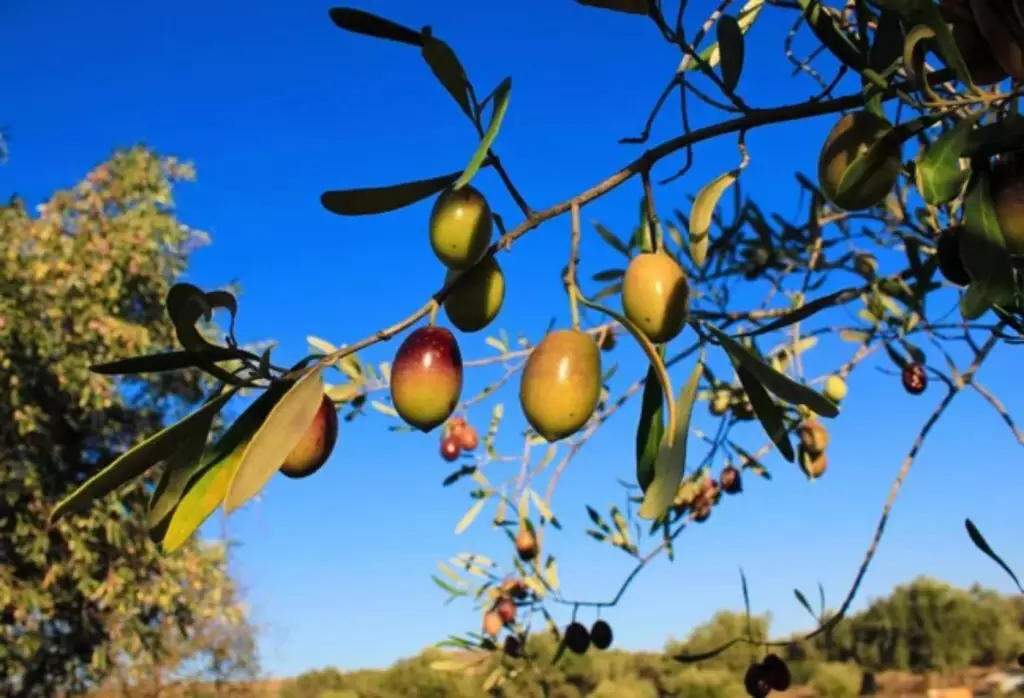
How long do olives take to fruit?
Typically, you can expect an olive tree to begin fruiting around the age of 3 to 5 years.
Once they start, olive trees can produce fruit annually, generating a fresh crop each season if conditions are favorable. Olive trees mature over time and reach their full fruit production potential about 7 to 8 years after planting.
Once mature, they can produce fruit for a very long time, with some trees continuing to bear fruit for hundreds of years.
Do olive trees produce fruit every year?
Olive trees are fascinating in their fruiting patterns. You might notice that they don't produce olives consistently every year.
This is due to a natural cycle known as 'alternate bearing' or 'biennial bearing.' In this cycle, olive trees may produce a large crop one year and have a significantly reduced, or even no, yield the following year.
This pattern may not be strictly observed in all olive trees. Some olive trees are self-pollinating, while others benefit from cross-pollination to set fruit effectively.
Proper tree care also plays a significant role in yearly fruit production. Your olive tree needs the right balance of watering, fertilization, and pruning to maintain health and encourage fruiting.
However, even with the best care, the alternate bearing cycle is a natural physiological process for olive trees that can be expected.
Regional Variations in Fruiting Season
Fruiting seasons of olive trees by region
Olive trees are adaptable, but your local climate significantly influences their fruiting season.
| Region | Fruiting Season |
|---|---|
| Mediterranean | Late summer - Early fall |
| California, USA | Fall |
| South America | Varies due to microclimates |
| Australia | Spring - Summer |
Typically, olive trees in Mediterranean climates bear fruit from late summer to early fall. If you're in a region with a similar climate, expect your olives to ripen in this timeframe.
In California, olives usually fruit in the fall, thanks to a climate similar to the Mediterranean. However, due to microclimates, especially in South America, the fruiting season can be less predictable.
Australian olive growers often see their trees fruit from spring to summer. Remember, local weather patterns and conditions like drought or excessive rain can alter these general expectations, so keep an eye on your trees and adjust care as needed.
Fruiting seasons of olive trees by climate zone
| Climate Zone | Fruiting Season (Specific Months) |
|---|---|
| Mediterranean | June - November |
| Subtropical | May - September |
| Temperate | October - December |
Mediterranean climate
- The Mediterranean climate is characterized by hot, dry summers and mild, wet winters.
- This climate is ideal for olive trees, which are native to the Mediterranean region.
- The long, warm summers provide optimal conditions for flowering and fruit set, with the fruiting season stretching from June to November.
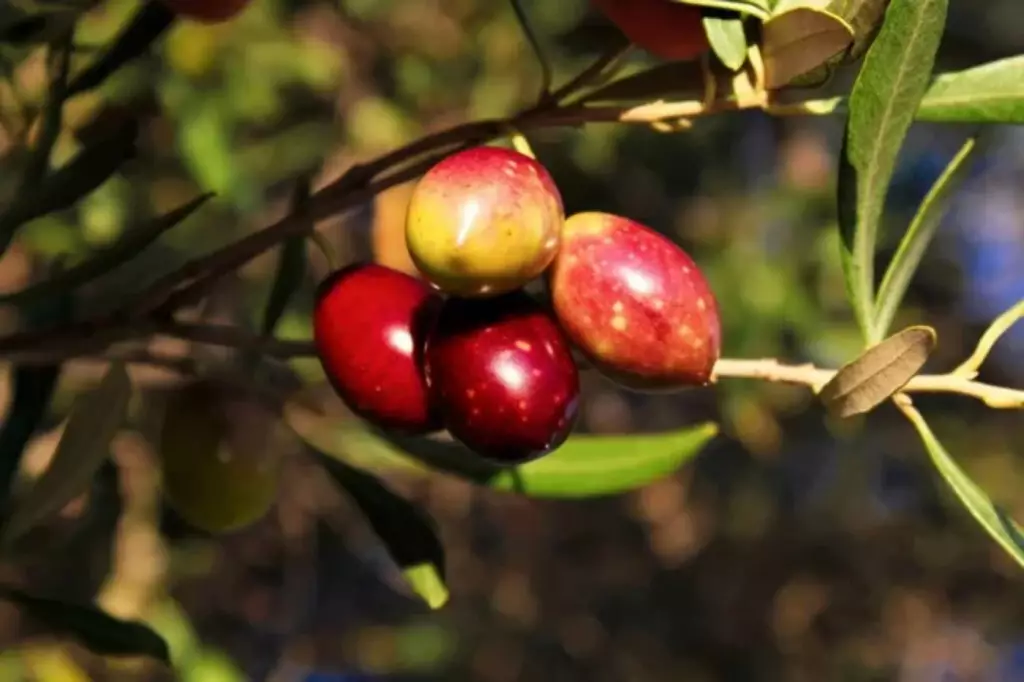
Subtropical climate
- Subtropical climates, with their warm summers and mild winters, also support olive cultivation.
- The fruiting season in these regions tends to be a bit earlier and shorter than in the Mediterranean, running from May to September.
- Subtropical climates might experience more humidity than Mediterranean climates, which can affect the growth and health of the trees and the timing of the harvest.
Temperate climate
Temperate climates present a more challenging environment for olive trees, which prefer the warmth of Mediterranean and subtropical zones.
- In temperate regions, the growing season is shorter, and temperatures can be cooler, leading to a later and shorter fruiting season, typically from October to December.
- Olive trees in these climates may require specific cultivars that are more cold-hardy and have a faster maturation period to ensure that the olives can be harvested before the onset of winter.
Maximizing Olive Tree Fruit Yield
To ensure your olive trees reach their full potential, proper care is key.
Prune your trees
- Purpose: Enhances airflow and sunlight exposure, leading to healthier tree growth.
- Timing: Late winter or early spring, setting up trees for the growth season.
Ensure adequate watering and irrigation
- Olive trees thrive in well-drained soil with regular watering schedules.
- Optimize watering, especially during dry seasons, to ensure consistent fruit production.
- Avoid overwatering to prevent harm to the trees.
Learn more about the effects of overwatering and underwatering olive trees in this article.
Feeding and fertilizing
- Use a balanced fertilizer around the tree's drip line in spring and late summer.
- Promotes robust growth and a healthy harvest.
Maintenance for disease prevention
- Regular check-ups and care to keep the trees disease-free.
- Ensure trees receive full sunlight for optimal growth.
Practice thinning
- Reason: Reduces strain on branches overladen with fruit, improving olive quality.
- Timing: Conduct as necessary during the growing season.
Proper soil management
- Importance: Soil quality significantly impacts tree health and fruit yield.
- Action: Invest in suitable soil amendments as needed to enhance growth conditions.
Solutions to Common Challenges
Pests and diseases management
Olive trees can fall victim to various pests, notably the olive fruit fly, and diseases such as olive knot. Effective management strategies include:
- Implementing regular monitoring and deploying traps to catch and reduce pest populations.
- Promptly removing infected tree parts. Apply recommended fungicides according to professional guidelines to control disease spread.
Weather adaptation strategies
Olive trees are vulnerable to extreme weather conditions, which can adversely affect fruit production. To mitigate these impacts:
- In areas experiencing temperatures below 15 degrees Fahrenheit, implement windbreaks or anti-frost measures to safeguard the trees. Check out these 5 tips to care for your olive trees during winter.
- In hot, dry climates, ensure trees receive adequate water without over-irrigation. Establish efficient watering practices tailored to seasonal needs and weather patterns.
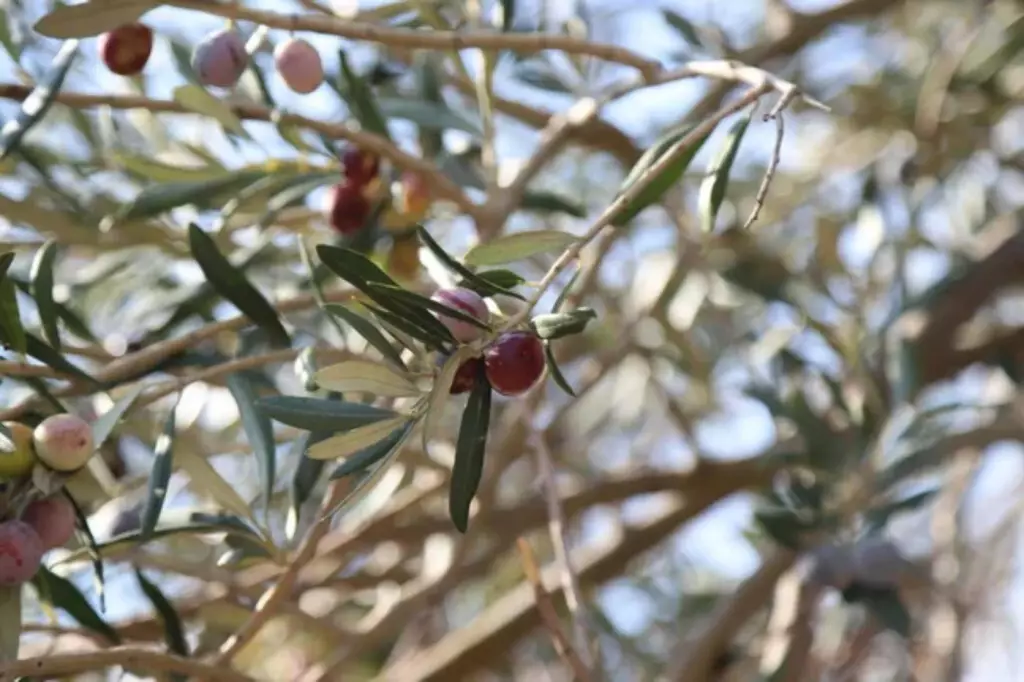
Water and humidity regulation
Proper water management is critical for olive tree health, addressing both drought and excessive moisture:
- Develop a watering schedule that considers seasonal variations and local rainfall data.
- Enhance soil drainage to prevent waterlogging during wet seasons, ensuring healthy root development.
Enhancing pollination and fruit set
While olive trees can be self-fertile, optimizing pollination can significantly improve fruit production:
- Planting multiple olive tree varieties can enhance cross-pollination and increase fruit yield.
- Foster a pollinator-friendly environment by avoiding harmful pesticides and planting flowers that attract bees and other beneficial insects.
- Ensure trees are planted in areas with ample sunlight and well-draining soil. Conduct research on local olive varieties and seek advice from agricultural experts to select the best types for your region's climate and soil conditions.
